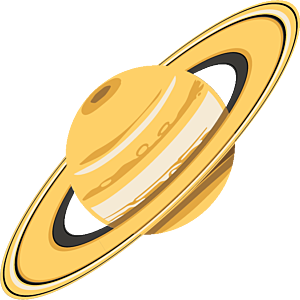The Downlink • Dec 23, 2022
A long night, and “so long!” to InSight
Space Snapshot

Happy solstice! This week marked the longest day of the year in the Southern Hemisphere, and the longest night of the year in the Northern Hemisphere. Solstices happen because the Earth rotates on an angle relative to its orbit around the Sun. Cultures around the world have long histories of solstice celebrations, many of which have evolved into the holiday celebrations we know today. Pictured: A weather satellite captured this image of the Earth during the December solstice in 2010. Image credit: EUMETSAT/NASA.
You love space, now take action
This weekly newsletter is your toolkit to learn more about space, share information with your friends and family, and take direct action to support exploration. Anyone can subscribe at planetary.org/connect to receive it as a weekly email.
Mission Briefings


So long, InSight, and thanks for all the data. NASA announced this week that they have lost contact with InSight, which has been studying Mars' interior since 2018. The lander’s battery power had been dwindling for several months, making this a sad but not unexpected end to the successful mission. Pictured: The last image sent home by InSight. Image credit: NASA.

The United Arab Emirates have launched their first lunar rover. The Rashid Rover is expected to reach the Moon’s surface in April, where it will study lunar soil and other topographical features. The mission will also serve as a technology demonstration.

Researchers have found a potential new biosignature for the search for life. A team of NASA-supported researchers has identified the gas methyl bromide as something to look for in the atmospheres of particular kinds of exoplanets. The gas is considered a potential biosignature because it isn’t formed naturally on Earth by anything other than biological activity.
From The Planetary Society


Neptune is a planet with plenty of secrets, but JWST is poised to uncover them. A new article from planetary scientist and Planetary Society board vice president Heidi Hammel and postdoctoral student Naomi Rowe-Gurney takes a deep dive into what JWST has learned about Neptune so far, and what’s to come. Pictured: JWST’s view of Neptune (left) alongside an earlier Hubble view of the planet (right). Image credit: NASA et al.

Planetary Radio has taken listeners to some unique places. This week, it’s the USS Portland to visit the Artemis 1 Orion spacecraft, which had very recently been scooped up by the Navy ship after its return from lunar orbit. This episode also takes a look back to other highlights, with excerpts of ten of the very best Planetary Radio episodes produced over the last two decades.

There’s good news for NASA in the latest congressional budget. NASA’s budget will grow by $1.3 billion in 2023 to a total of $25.4 billion — less than hoped for by the White House but still 5.6% above the prior year. The main beneficiaries are NASA's human and scientific exploration efforts: Artemis, Mars Sample Return, and Dragonfly all see growth. It also adds $50 million to the asteroid-hunting NEO Surveyor telescope, a top advocacy priority of The Planetary Society, now slated to launch in 2028. Our NASA budget page has the details.
What's Up

All five planets that can be seen with the naked eye are up in the night sky this week. If you have a clear view to the western horizon, look for super-bright Venus with Mercury above it, both low to the horizon shortly after sunset. Higher in the sky, look for yellowish Saturn and bright Jupiter, with reddish Mars further to the east. Learn more at planetary.org/night-sky.
Wow of the Week

Planetary Society member Danielle Rose created this piece, called “Ice Cliffs of Pluto,” based on images captured by NASA’s New Horizons spacecraft as it flew by Pluto. New Horizons took nine years to reach its destination, during which time Pluto was demoted from its status as a planet. After such a long journey, New Horizons only got to briefly zip past Pluto (moving at 84,000 kilometers per hour, or 52,000 miles per hour) before it was saying “so long!” and continuing on into the outer reaches of the Solar System. Image credit: Danielle Rose.
Send us your artwork!
We love to feature space artwork in the Downlink. If you create any kind of space-related art, we invite you to send it to us by replying to any Downlink email or writing to [email protected]. Please let us know in your email if you’re a Planetary Society member!


 Explore Worlds
Explore Worlds Find Life
Find Life Defend Earth
Defend Earth


